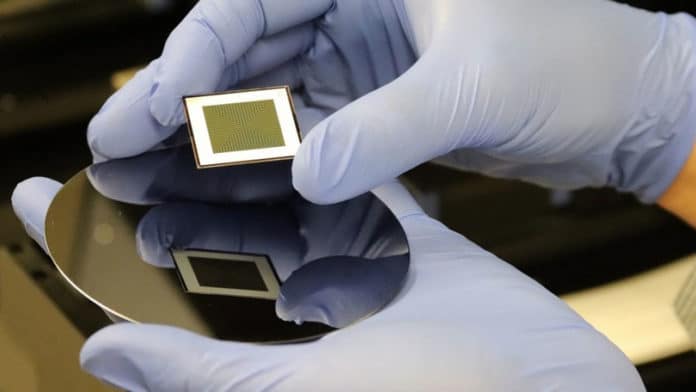Researchers at the Australian National University (ANU) claim to have set a new world record, creating a more efficient type of solar cell using laser processing. The researchers have produced a dual-sided silicon solar cell, meaning both the front and back of the cell generate power.
Solar cell technology has made great progress over the past few decades, bringing the solar energy cost down to a point where it is competitive with conventional electricity prices. While mono facial panels have historically dominated the market, recent developments in manufacturing bifacial panels have made them accessible for commercial applications.
The ANU team used specific laser doping technology to fabricate the cells. Laser-doping is a promising technology in solar cells thanks to its advantages, such as the method’s viability at room temperatures and easy control over emitter depth and surface concentration. It is a low-cost, industry-compatible process for boosting solar cell efficiency that uses lasers to locally increase electrical conductivity.
Thanks to this technology, the researchers were able to achieve a front conversion efficiency of 24.3% and a rear conversion efficiency of 23.4%, representing a bifacial factor of 96.3%. The researchers say this performance represents an effective power output of approximately 29%, well exceeding the performance of the best single-sided silicon solar cell. The results, which the research team claims, have been independently verified by the Commonwealth Scientific and Industrial Research Organisation (CSIRO).
“This is a world record for selectively laser-doped solar cells and among the highest efficiency bifacial solar cells,” Chief Investigator Dr. Marco Ernst said.
According to the principal investigator Dr. Kean Chern Fong, the so-called bifacial solar cells can easily beat the performance of single-sided silicon solar cells, thus resulting in increased efficiency for solar photovoltaic (PV) projects.
“We have developed what I would call a true bifacial solar cell, as it has nearly symmetrical power generation capacity on both surfaces of the device,” Dr. Fong said. “When deployed on a conventional solar farm, a bifacial cell absorbs direct incoming light, while also taking advantage of ground reflection, which can contribute up to additional 30% power generation.”
Fong added that Bifacial solar cells are becoming increasingly important in the rollout of solar farms that promise greater electricity production with the same amount of sunlight and that cover the same land area.
“Bifacial solar cells are expected to have a market share of over 50% in the next five years,” said Fong. “Our work demonstrates the incredible capabilities of this technology.“
